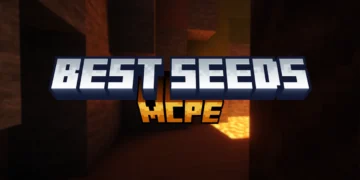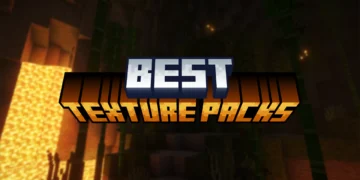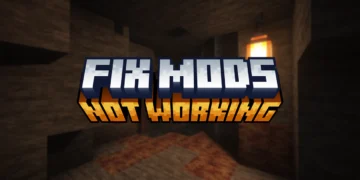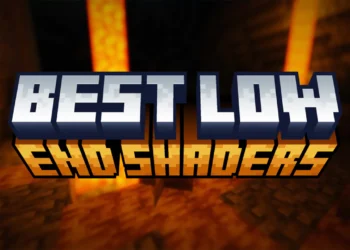Let me tell you How To Install Shaders in Minecraft PE. Shaders confused me way more than texture packs when I first tried installing them. The file formats are different, they go in a different folder, and some shaders are packaged weird where you’re not sure what you’re even supposed to do with them. Good news is once you’ve done it a couple times, it becomes automatic. Bad news is that first attempt might involve some trial and error, especially if the shader creator didn’t package things properly.
It doesn’t matter if you are on Android or iOS, because the process is similar. However, on Android, it gives you a bit more manual control that could be beneficial. More manual control mean more opportunities to put files into wrong place. On the other hand, on iOS, it’s more locked down. So less flexibility, less things to mess up.
As we’ve already mentioned above, this is a guide where we show you How To Install Shaders in Minecraft PE! If you’d like to find the Best MCPE Shaders, you should read this.
How To Download a Shader Pack
Finding shader packs is easier than it used to be, but you still gotta watch out for garbage sites trying to trick you into clicking ads. MCPEGuides is our main source. They vet uploads decently and the download process is straightforward – no thirty redirects through ad networks. Just find the shader you want, scroll past the description, hit download. File goes straight to your device.
Sometimes creators host shaders on their own websites or Discord servers. That’s fine, usually means the shader’s newer or still in development. Just make sure you are actually on a real site, not a scammy site. The file you’re downloading should be a .mcpack or .zip. If you’re downloading something labeled as a shader and it’s like 200MB, something’s probably wrong. Keep an eye on that.
Watch your storage before downloading a bunch. I’ve made the mistake of grabbing five shaders at once to test them, forgetting I was almost out of space. Phone got cranky about it real quick. Also – read the compatibility info. Some shaders only work on specific Minecraft versions.
How To Install Shaders on Android
Android makes this pretty painless if the shader’s packaged as .mcpack. Download it, tap the file, Minecraft opens and imports it automatically. Go to your world settings, video settings, scroll down to shaders, activate it. Done in like twenty seconds. But not everyone packages shaders correctly, so let’s cover the manual method too.
Got a .zip file? Extract it first using whatever file manager you’ve got. Inside should be a folder with shader files – usually stuff like fragment.glsl, vertex.glsl, a manifest.json file. That whole folder is what you need. Open your file manager and navigate to Internal Storage > games > com.mojang. If you don’t see a “shaderpacks” folder in there, you gotta create one yourself. Yes, spelled exactly like that, all lowercase, no spaces. Minecraft won’t recognize it otherwise.
Copy or move your extracted shader folder into that shaderpacks directory. Not the .zip, not individual files – the actual folder containing everything. Now here’s where people mess up – they put the folder inside another folder. So it ends up like shaderpacks > ESBE_folder > actual_ESBE_files instead of shaderpacks > actual_ESBE_files. That extra layer breaks it. The shader files themselves need to be one level deep in shaderpacks, not buried deeper.
Restart Minecraft completely after moving files. It won’t detect new shaders until you do. Then check your video settings and the shader should appear in the list.
Installing Shaders on iOS
Download the shader in Safari if possible. Other browsers work but Safari plays nicest with iOS file handling. If it’s an .mcpack, tap it after downloading and select “Open in Minecraft” when prompted. Should import directly and show up in your shader list under video settings. Sometimes tapping the .mcpack does nothing. Or it opens in some random app that has no business trying to open shader files. When that happens, go to your Files app, find the Downloads folder, long-press the shader file, and hit Share. Scroll through the share options until you find Minecraft, tap it. Roundabout but gets the job done.
Zip files are more annoying on iOS. You can extract them in the Files app now – just tap the .zip and it creates a folder. But then you’re stuck because iOS doesn’t let you easily access Minecraft’s internal folders like Android does. There’s no simple way to manually drop files into the shaderpacks directory. Your options with .zip files on iOS: find a properly packaged .mcpack version of that shader instead, or use a third-party file manager app that can access app directories. Some apps claim to do this but Apple keeps locking things down more with each iOS update, so your mileage varies.
Honestly if you’re on iPhone and a shader only comes as .zip with no .mcpack alternative, might not be worth the headache. Plenty of good shaders package things properly for mobile.
Activating the Shader in Minecraft PE
Alright, shader’s installed. Now you gotta actually turn it on, which should be simple but Minecraft sometimes hides this in weird places depending on your version. Open Minecraft, load into a world – doesn’t matter if it’s creative, survival, whatever. You can’t activate shaders from the main menu, needs to be in an actual world. Pause the game, go to Settings. Scroll down to Video settings. Should be near the bottom of the settings list. Tap that, then keep scrolling until you see a section just labeled “Shaders” or sometimes “Shader Packs.” All your installed shaders show up there as a list.
Tap the shader you want. It’ll take a second to load – screen might go black briefly, don’t freak out. That’s normal. The shader’s loading and applying itself to everything. Once it finishes, unpause and boom, your world looks different. if, even when you installed the shader, it doesn’t show up in that list? The files may be corrupted, incompatible with your version of Minecraft, or in the incorrect folder. Go back and make sure you followed the installation instructions precisely. Some shaders have settings you can tweak – brightness, shadow distance, water quality, that kind of stuff. Usually there’s a little gear icon or “Edit” button next to the shader name. If you’re having trouble performing, try those. Reducing the quality of the shadows or disabling specific effects helps distinguish between a slideshow and a playable version.
One shader at a time though. Can’t stack multiple shaders like you can with texture packs. Pick one, activate it, that’s what you get.
Frequently Asked Questions
Why isn’t my shader showing up after I installed it?
Probably sitting in the wrong folder. Double-check you put it in the shaderpacks folder, not resource_packs or behavior_packs. Also make sure the actual shader files aren’t buried in an extra folder layer – common mistake that I’ve made like five times myself.
Can I use shaders and texture packs together?
Yeah, and honestly that’s when things look best. Shader handles the lighting and effects, texture pack changes how blocks look. Just be prepared for your device to work harder running both simultaneously. Battery drain gets real.
Do shaders affect FPS?
Yes, shaders can lower FPS depending on your device. If you experience lag, choose a lighter shader from our Best Low-End Shaders for Minecraft PE (2025) guide.
Do shaders work in the Nether and End?
Most do, yeah. Some look absolutely incredible in the Nether with all the lava lighting. Others get weird with the End’s void and make things too dark or glitchy. Depends on how well the shader creator optimized for those dimensions.
How do I uninstall a shader?
Just go back into your shader settings in-game and select “None” or whatever the default option is. If you want to completely remove it from your device, delete it from the shaderpacks folder manually.
Conclusion
We are at the end of the article! Finally, you have learnt How To Install Shaders in Minecraft PE (2025). It wasn’t that hard, was it? Look at the game now, it has completely changed. It doesn’t matter if you want realistic lighting, better water reflections or graphical improvements. Shaders are always a great way to-go!
Looking for the best shaders? Check out our Best MCPE Shaders for 2025 and find the perfect one for your device!













